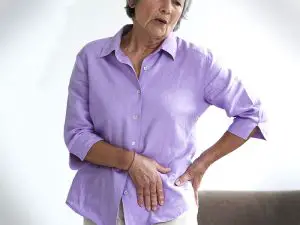Hip replacement surgery is one of the medical procedures indicated for hip arthritis patients with moderate to severe symptoms that interfere with their day-to-day activity.
However, not every patient is a candidate, and to avoid complications doctors prefer not to recommend this procedure to everyone. For example, they are not indicated to patients who smoke because they are more likely to have a complication, and it is not an option for patients with severe osteoporosis because the remaining bone needs to adhere and support the prostheses, which is less likely to happen in these patients.
One of the reasons that contribute to maintaining patient satisfaction rate around 90% is by offering this surgical option to the right patient. However, even after choosing carefully which patients are the best candidates for hip replacement surgery, it is not without problems, and there’s a remaining 10% of patient dissatisfaction. Also consider the cost of a Hip Replacement if having private treatment.
The most common complications are inflammation and swelling, but some patients would experience disturbing problems such as hip dislocation, increasing levels of hip pain on your side, and sometimes thigh pain starting closely after their surgery. But, why would hip replacement surgery result in thigh pain?
Thigh pain after hip replacement therapy
Patients with hip replacement therapy reporting this symptom often describe it as pain in the middle part of the thigh, located in the anterolateral portion of the operated leg. We feel it is unlikely to be caused by a stiffness in the hip, unlike Knee Replacement stiffness. A specialist on the field would likely relate the site of pain with the level at which the tip of the prosthesis actually lies. That’s why another name you would find in the scientific literature is “end-of-stem pain”, referring to a type of pain located at the tip of the stem.
This type of pain is the result of a mechanical load on the implant, which is not always completely attached to the bone. Thus, you would not have any symptoms at rest, and pain would start as soon as you start moving your leg, becoming more intense in the starting phase of the movement and starting to relieve as you go back to your initial position. This is the most typical presentation, but every patient may have an individual variation, severity and duration of the symptoms.
As for the mechanism or exact reasons why thigh pain arises, it is still a matter of debate, and there might be multiple factors contributing to it. However, most of them fall into one of these mechanisms:
- Tip micromotions: Hip replacement prostheses have a round head that is meant to remain fixed to the hip, a long stem that goes into a deeply carved canal in the femoral bone, and the neck connecting both parts. If the stem remains movable and starts oscillating inside the femoral canal, it would begin pressing on the endosteum, the inner part of the bone. This area has plenty of nerve endings that will trigger thigh pain as a response to tip micromotions inside the femoral canal.
- Tip overload: The bones and articulations hold all of the weight of the body, and they need a stable structure to do so. The load of the whole body runs through the bones, and they all contribute to keeping it straight in a process called stress transfer. Tip overload occurs when, instead of dispersing all over the stem and the rest of the bone, the load of the body is concentrated on the tip of the stem. Such an overload irritates the periosteum and wear-down changes to the femur with pain as the main consequence.

As you have seen, the main problems that cause thigh pain after a hip replacement surgery depend on the stem of the prosthetic joint. Trying to make it thigh pain less likely, doctors have tried cemented hip arthroplasty as an option to avoid an undesired micromotion or incorrect stress transfer. As a result, thigh pain after a cemented hip arthroplasty is unlikely, and when it appears, it is often due to a loosening of a prosthetic component.
To diagnose your case, you would need to describe your symptoms accurately, undergo a physical exam and perform a series of imaging tests to detect a loose stem, wear down of the bone tissue in the affected limb, and other radiological signs that may contribute to the final diagnosis.
If your pain is not located in the middle of the thigh, and in the anterolateral portion of your operated limb but in the back or the groin, you might need to consider other diagnoses and solutions with your doctor.
Is there a solution to it?
Treating thigh pain after hip replacement therapy is often a challenge. There might be multiple reasons resulting in thigh pain, and it is often difficult to identify which one of them to tackle first.
There is no known surgical treatment to fix it, and medical therapies provide momentary relief. In most cases, patients undergo physical therapy, and their symptoms improve over time as their prosthetic articulation becomes adhered to the surrounding bone tissue.
After reading that cemented joint prosthesis will not give you thigh pain, most people would turn to them as the ultimate solution. However, it is a difficult decision to make because the cement debris often causes inflammation to the bone tissue and there’s a constant worry about this material to break down and cause complications.
Thus, using cemented prostheses is not for everybody, and each patient should evaluate both the upsides and downsides with their surgeon.
In most cases, patients with cement-less prostheses and thigh pain would have these symptoms for a limited amount of time. When the distal bone starts to adhere to the prosthesis and bone re-modelling contributes to stabilize the stem, thigh pain is resolved without extra surgeries or a lifetime therapy.
References:
Kapadia, B. H., Johnson, A. J., Naziri, Q., Mont, M. A., Delanois, R. E., & Bonutti, P. M. (2012). Increased revision rates after total knee arthroplasty in patients who smoke. The Journal of arthroplasty, 27(9), 1690-1695.
STVILLE, J., Ecker, J. A., Winget, J. M., & Berghauer, M. H. (1991). The anatomy of midthigh pain after total hip arthroplasty. JOHNS HOPKINS APL TECHNICAL DIGEST, 12(2), 198-214.
Pierannunzii, L. M. (2008). Thigh pain after total hip replacement: a pathophysiological review and a comprehensive classification. Orthopedics, 31(7).
Cameron, H. U., Trick, L., Shepherd, B., Turnbull, A., Noiles, D., & McTighe, T. (1990, February). An international multi-center study on thigh pain in total hip replacements. In American Academy of Orthopaedic Surgeons Meeting, New Orleans, Louisiana.
Faraj, A. A., & Yousuf, M. (2005). Anterior thigh pain after cementless total hip arthroplasty. International orthopaedics, 29(3), 149-151.
Brown, T. E., Larson, B., Shen, F., & Moskal, J. T. (2002). Thigh pain after cementless total hip arthroplasty: evaluation and management. JAAOS-Journal of the American Academy of Orthopaedic Surgeons, 10(6), 385-392.
Lam, Y. F., Chan, P. K., Fu, H., Yan, C. H., & Chiu, K. Y. (2016). A review of the clinical approach to persistent pain following total hip replacement. Hong Kong Med J, 22(6), 600-7.
Forster-Horvath, C., Egloff, C., Nowakowski, A. M., & Valderrabano, V. (2014). The painful primary hip replacement–review of the literature. Swiss medical weekly, 144(4142).

2 Comments